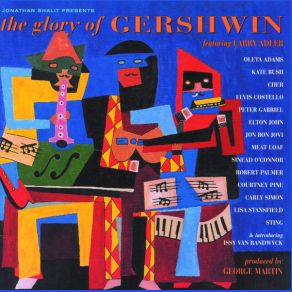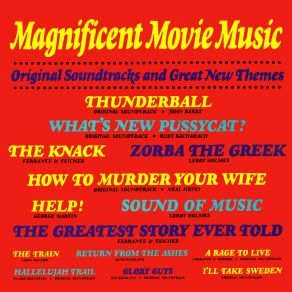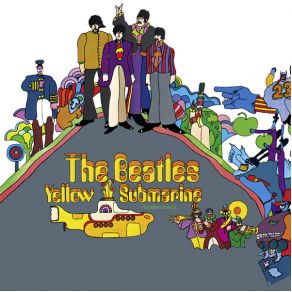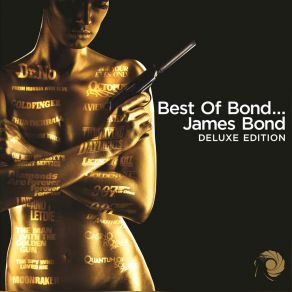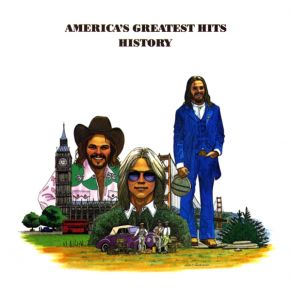George Martin
Wikimp3 information about the music of George Martin. On our website we have 10 albums and 23 collections of artist George Martin. You can find useful information and download songs of this artist. We also know that George Martin represents Theatre/Soundtrack genres.
Biography
[Edit]George Martin is best known as the producer of most of the Beatles' recordings from 1962 through 1969. His actual credits are diverse, encompassing artists ranging from 1950s jazz bandleader Humphrey Lyttleton, the comic talents of Peter Sellers and Michael Bentine, legendary vocalists like Ella Fitzgerald, and rock acts as different as Billy J. Kramer & the Dakotas, America, Peter Gabriel, and Celine Dion.
The association with the Beatles alone made him the most well-known and successful record producer in the history of popular music. In the time of his own professional prime, that distinction might have rated him a mention in some trade magazines. But with over a billion copies sold of records and songs whose making he supervised (and they are still selling, with billions of pounds and dollars spent on them), he has earned a knighthood and been the subject of a 151-song, six-CD set devoted to his work as a music director. Few record producers — John Hammond Sr., Sam Phillips, Leonard Chess, and Willie Dixon — rate as his peer, in terms of influencing the shape and direction of music.
George Martin was born in 1926 in London. Although his family wasn't especially musically oriented, Martin became interested in the piano before the age of eight, and taught himself a good deal about the instrument. His education was disrupted by the economic depression that afflicted England during the 1930s, and then by the outbreak of war. In addition to music, Martin was drawn to architecture and design, and aeronautics, and at one point considered trying to become an aircraft designer. There were no opportunities available, however, and he was further thwarted when he was rejected in his bid to join the Royal Air Force, in hope of learning to fly. Instead, he joined the Fleet Air Arm, the aviation branch of the Royal Navy, where he was eventually trained and commissioned as a flying officer, but missed seeing any action by the abrupt end of the war in August of 1945. Martin was in uniform for another year, at the end of which, after passing through a clerk's job, he entered the Guildhall School of Music, studying composition, conducting, orchestration, and theory, and taking up the oboe as a second principal instrument.
In the fall of 1950, following a short stint cataloging music for the BBC, Martin received the offer of a job as assistant to Oscar Preuss, the head of Parlophone Records. The Parlophone label in those days was part of the EMI organization, but it was a poor relation to such labels as Columbia (the British imprint, no relation to the American company of that name) and HMV Records. During the austerity of the war years, the best of Parlophone's roster in popular and classical music had been parceled out to the other two companies, leaving Parlophone with secondary and regional artists. For the next six years, as Preuss' assistant, he learned about the recording process and how to manage it, and how to work effectively with artists ranging from solo pianists and dance bands to symphony orchestras.
Parlophone released records in every category from classical to "race" (i.e., R&B), but the label's top artists during the early '50s were Scottish dance music star Jimmy Shand, Roberto Inglez, a Scotsman (real name Bob Ingles) who specialized in Latin music, conductor Karl Haas, and the London Baroque Ensemble. None of these artists, worthy and popular as they were in their respective fields, were going to conquer the world. The label eked out a profit working around the edges of low production budgets and emaciated promotional budgets, when compared to its rivals HMV and Columbia U.K.; it only seemed to have a leg-up on Regal Zonophone, the EMI imprint that, by the mid- to late '50s, had been given over entirely to Salvation Army Band recordings.
Martin joined the record industry just as it was going through a vast technological transition, from 78s to LPs and 45s — a process that EMI, owing to a certain ossified quality in its management, was slow to join — and to magnetic tape as a means of recording. He was quicker than many of his colleagues to grasp the importance of these innovations, especially magnetic tape, and what they could mean to the recording process. As early as 1955, he had recorded Peter Ustinov in a series of overdubbed recordings of his own voice and instruments, in a satirical piece called Mock Mozart — that release could be considered the distant antecedent to such creations as the Revolver and Sergeant Pepper's Lonely Hearts Club Band albums.
In 1955, when Preuss retired, Martin was selected to succeed him as the head of Parlophone Records, at 29 the youngest label chief in the company's history. Within the constraints of his budgets, he was able to start putting his own mark on the label. Outbid for most of the top music talent in the country, he got only limited chances to work with anything resembling the top artists of the era — instead, he concentrated on non-musical performers and tapped into a small but profitable niche in comedy records. Ustinov was one of his successes, but his real star was Peter Sellers, then an up-and-coming comic performer and would-be actor. Sellers, who was then best known as a member of the Goons, a popular comedy team, became a mainstay of Parlophone's stable of acts during the second half of the 1950s. Martin also added to the company's roster the talents of the Temperence Seven, a trad-jazz/nostalgia outfit who ultimately gave the producer his first number one hit on the U.K. charts with "You're Driving Me Crazy" in 1961; future Broadway star Jim Dale; and Rolf Harris, the Australian singer.
During the early rock & roll boom of 1956-1958, Martin missed a chance to sign Tommy Steele, but did get the band that accompanied him, the Vipers Skiffle Group, led by Wally Whytton, who enjoyed a Top Ten hit with "Don't You Rock Me, Daddy-O" and cut numerous successful records (even getting a release of their work in the United States) between 1957 and 1961. He didn't see much in the way of youth-oriented acts, however, until the spring of 1962, when he chanced to interview Brian Epstein, a Liverpool-based manager, about a quartet that the latter was representing. His signing of the Beatles that summer, though hardly an auspicious-seeming moment at the time, ended up forever transforming Martin, Parlophone, EMI, and popular music.
He proved to be precisely the kind of producer that they needed, in that he chose to communicate with and understand his artists — those years of nurturing Parlophone's rather threadbare roster of performers served him in good stead, where other producers, even at EMI, retained much more formal and distant relations with their artists; he recognized their songwriting talent early, and only worked to polish the resulting records and move the abilities of John Lennon and Paul McCartney (and later George Harrison and Ringo Starr) in more commercial and productive directions. What's more, he never tried to make them sound like something they weren't. His colleague Walter J. Ridley, at HMV, would communicate with acts of his such as Johnny Kidd & the Pirates by memo, and hardly ever see them, and get the hard R&B-oriented group to record absurd pop songs such as "The Birds & the Bees"; or get singers like Alma Cogan to do material that wasn't suited to her taste or the direction she wanted to go in. Norrie Paramor, at Columbia U.K., started adding strings and full orchestra to Cliff Richard's music fairly early, Martin always had his performers sound like who they were, just optimizing the recording.
Thus, "Please Please Me," with his help, evolved from a slow, dramatic Roy Orbison-style lament (which was how John Lennon conceived it) into a roaring rocker that swept all the competition before it. And "Misery," a short ballad with a break that needed embellishment, got it from Martin on electric piano without changing its character. Paul McCartney had some liking for highly melodic pop and show tunes, but when the Beatles did "Till There Was You," they did it themselves, rather than disappearing in favor of an orchestra. Martin also let John Lennon's throat-tearing single take of "Twist and Shout" get out on their all-important first album, where other producers might have played it safe by opting for a softer song.
And he was sensitive to the band's concern that they play on their own records. It was common practice in those days, with studio time expensive and teenage audiences perceived as unconcerned who backed up the singer on a record, to bring in professional session players to play on recording sessions, and leave it to the band to handle concert work (Herman's Hermits was the extreme example of this). Martin only did this once, on the Beatles' earliest sessions, calling in drummer Andy White, and only because he was unsure at the time about the abilities of new member Ringo Starr.
Most importantly, by working with the group, and not simply working on their recordings, as was the custom of many producers, Martin educated them and started an evolutionary process in their thinking and writing that they never would have found working the Cavern Club or any of the other stages they were playing. The band as a whole, and Lennon, McCartney, and Harrison as composers, rose to the occasion, and soon they were writing more elaborate songs, and thinking in more sophisticated sounds, and writing music that allowed for more sophisticated embellishment. That led to the writing and recording of songs such as "Yesterday," "In My Life," "For No One," "Tomorrow Never Knows," "Penny Lane," and "Strawberry Fields Forever," even as the band also created hard-rocking songs like "Ticket to Ride" and "Paperback Writer." His role in the creation of some of their most inventive songs varied; as on "Misery," where his piano solo embellished the break, he devised the string quartet accompaniment for Paul McCartney's solo performance on "Yesterday," composed the harpsichord part used on the break of "In My Life," and devised the French horn part on "For No One," while on the group's purely psychedelic music — the Sergeant Pepper and Magical Mystery Tour projects (and related singles) — Martin's long experience in the recording studio made the use of backward tapes and layered musical effects second nature to him, and gave those albums their shape.
All of this music was important, not just as Beatles recordings but as recordings that literally stretched the envelope of what rock & roll and popular music were about, and expanded the range and type of sounds that defined the music — what the public would accept and what artists would conceive in trying to appeal to that public. In much the same way that Count Basie, Benny Goodman, Billie Holiday, and Bob Dylan (artists associated with producer John Hammond), and Howlin' Wolf and Elvis Presley (artists associated with producer Sam Phillips) ended up altering the musical landscape that they found, the Beatles with George Martin directing their recordings redefined popular music. Around them, artists such as the Rolling Stones, the Yardbirds, the Who, and the Kinks all moved in, extending the breach that they'd opened like an invading army moving inland from a beachhead. Indeed, Martin and the nature of his work with the Beatles opened the way for Bob Dylan, Simon & Garfunkel, and similar artists each to take a page from their book, both in the way they made music and in the way they recorded it — this was especially true of Simon & Garfunkel who, in conjunction with engineer/producer Roy Halee (who was, in effect, their George Martin), mastered the use of the recording studio as an instrument on their records in a way and on a scale that no popular artist in America ever had.
Martin's musical successes in the wake of the Beatles included Gerry & the Pacemakers, Billy J. Kramer & the Dakotas, and Cilla Black, of whom the latter ended up virtually a musical and entertainment institution in England. In 1963, records produced by Martin spent 37 weeks at the number one spot on the U.K. charts, an astonishing achievement for a producer who'd only enjoyed his first chart-topper two years earlier. Add to that the presence on Parlophone of the Hollies, who were produced by Martin's assistant Ron Richards, and the number of top acts, and the volume of sales associated with Martin's work was astounding by any standard — between them, the Beatles and the Hollies alone had transformed Parlophone into the biggest of the EMI labels. And by 1964, with the Beatles and their British compatriots breaking sales records in America as well as England, he had become the most successful record producer of the decade, and on his way to the top of his profession for all time. The Beatles' music was so successful that, for the first time, Martin began going into the studio himself to record instrumental versions of their songs — although those records were never hugely popular, they sold reasonably well, and their content also revealed little details behind the creation of the finished songs; on one of his LPs of Beatles covers, the tracks named "Scrambled Eggs" and "Auntie Gin's Theme" revealed to the public the working titles of "Yesterday" and "I've Just Seen a Face."
Most onlookers, who saw Martin's name attached to the Beatles' albums up through Abbey Road, were not aware, however, that Martin had disassociated himself from Parlophone and EMI Records after 1965. Amazingly, given his success over the previous two years, Martin had seen no increase in his ridiculously small salary of 3,000 pounds (about 7,000 dollars) a year, which had been established when Parlophone was a small, modestly profitable part of the EMI group. Worse still, the corporate management had contrived, through some arcane interpretation of its rules, to deny him a Christmas bonus; and when it was time to renegotiate his contract, and he had wanted a small producer's royalty (a standard industry practice), they'd come up with a formula that could easily have ended up reducing his compensation. With Ron Richards, another EMI producer named John Burgess, and a former EMI producer named Peter Sullivan, Martin co-founded AIR (Associated Independent Recording), their own production company.
AIR could have been a record label as well — the collective experience of its four founders was more than most record companies have started with — but for the fact that it was under-capitalized. None of its founders had earned huge amounts of money, and while they could probably have attracted well-heeled backers (today, the venture would have been considered the musical equivalent of Dreamworks as a film studio, and drawn would-be investors and stock underwriters by the thousands), the decision was made to build the business gradually from the ground up. Martin did discover and sign the Action, an absolutely first-rate white Liverpool soul-based band, but their work was licensed to and issued by EMI — listening to their work from 1966 (all available from Edsel Records), incidentally, is a reminder that while he was busy helping the Beatles to expand the boundaries and meaning of popular music, Martin could guide the creation of solid, unpretentious, beautifully crafted soul music as effectively as the best American producers. Even as he worked to establish AIR, as part of his agreement to leave the company, he continued to produce the Beatles' music through 1969 and the release of Abbey Road, though he found it impossible to work with them on the project that became known as Let It Be, which was ultimately produced by Phil Spector (and is usually regarded as one of the group's weakest creations).
The breakup of the Beatles freed Martin from the last vestige of his former relationship with EMI, and his career and the range of music that he worked with blossomed during the 1970s. He worked with acts ranging from America and Jimmy Webb to Jeff Beck and the Mahavishnu Orchestra. His relationship with the Beatles after their breakup was limited — John Lennon and George Harrison used other producers as soon as the group was defunct, but Ringo Starr chose Martin to work on his album of '30s pop standards, Sentimental Journey, and Paul McCartney reunited with Martin to work on the soundtrack Live and Let Die from the James Bond movie. When EMI began reissuing Beatles material, and releasing unissued tapes from the vaults in the mid- to late '70s, Martin was called in on the most important of these project, Live at the Hollywood Bowl and Rock & Roll Music. He also very reluctantly agreed to produce the music and soundtrack for Robert Stigwood's film Sgt. Pepper's Lonely Hearts Club Band; he loathed the idea of the movie and the way it was to be done, but knew that if anyone else did the job, the music would suffer even more harshly.
During the 1970s and 1980s, Martin finally saw the recognition as well as some of the financial rewards that his success merited. An AIR studio opened on the West Indies island of Montserrat was destroyed in a hurricane and an earthquake that followed, but the company survived and continued in business right into the next century. He opened the 1980s producing a pair of hit albums for Paul McCartney, Tug of War and Pipes of Peace, and by then was an elder statesman of music, engaged to give commencement speeches and sought after for consulting jobs. By then, only the top artists in the world, including José Carreras, were approaching him. The reissue of the Beatles' music on CD in the late '80s and the 20th anniversary of the release of the Sgt. Pepper's Lonely Heart's Club Band album, both brought Martin back before the public — the CDs engendered some controversy, however, over his decision to use only the mono masters on the group's first four albums, overlooking the stereo versions, which he regarded as aesthetically inferior. By the 1990s, the artists he was working with included Celine Dion and Kate Bush. In 1993, Martin enjoyed another platinum record to his credit with the cast album of the Broadway musical Tommy, for which he and composer Pete Townshend both made extensive public appearances. Martin received a knighthood in 1996, the first member of his profession ever so honored by the English crown, and in 1997 capped his career with "Candle in the Wind," a British number one hit by Elton John that became the biggest-selling single in the history of popular music. He announced his retirement in 1998, following the release of his album In My Life, an all-star production featuring such artists as Celine Dion and Phil Collins, devoted to songs of his choosing. In July of 2001, EMI Records honored Martin with the release of the six-CD, 151-song box set Produced By George Martin, a career-spanning profile of his work, from Roberto Inglez to Celine Dion.
Title: 007: Live and Let Die (Original Motion Picture Soundtrack)
Artist: George Martin
Genre: Theatre/Soundtrack
Title: Live and Let Die (Original Motion Picture Soundtrack)
Artist: George Martin
Genre: Theatre/Soundtrack
Collections
Title: The Glory of Gershwin
Genre: Jazz
Title: Rare Songs Played on Radio, Vol. 2
Genre: Pop
Title: Magnificent Movie Music
Genre: Theatre/Soundtrack
Title: A Musical Memorial for America's Veterans
Genre:
Title: Vintage Calypso Hits
Genre: World Music
Title: Vintage Pop No. 80
Genre: Pop
Title: George Martin: In My Life
Genre: Rock, Pop, Theatre/Soundtrack
Title: Candlelight & Roses Volume 6
Genre: Instrumental
Title: Sound Like Fun Vol. XIII
Genre: Instrumental
Title: The Sound Gallery Vol. 2
Title: Gold Super Instrumentals (CD1)
Genre: Instrumental
Title: Gold Super Instrumentals (CD2)
Genre: Instrumental
Title: 60's Girl Pop
Genre: Soul, Vocal Jazz, Pop
Title: UK Chart Pop Hits Of 1971
Genre: Hip Hop/R&B, Pop, Pop Rock, Easy Listening
Title: 100 Greatest Love Songs 2020 (CD1)
Genre: Hip Hop/R&B, Soul, Vocal Jazz, Rock, World Music, Country, Eurodisco, Pop, Folk
Title: 101 Power Ballads 2020 (CD2)
Title: 60 Top Hits From The 60s (CD2)
Genre: Hip Hop/R&B, Soul, Rock & Roll, Pop
Title: 100 Tracks Rock Classics Playlist Spotify 2021 (CD1)
Genre: Blues, Rock, Hard Rock, Power Pop, Rock & Roll, Pop, Acoustic
Featuring albums
Title: Yellow Submarine
Artist: The Beatles
Genre: Rock, Rock & Roll, Punk Rock, Pop, Theatre/Soundtrack, Psychedelic
Title: George Martin Presents...
Artist: Howard Blake, John Dankworth, Jack Brymer, John Williams, Barbara Thompson, Francis Monkman, The Medici Quartet
Genre:
Title: The José Carreras Collection / The Jose Carreras Collection
Artist: Jose Carreras
Genre: Pop, Theatre/Soundtrack, Opera
Title: Best of Bond... James Bond (Deluxe Edition)
Artist: Various Artists
Genre: Theatre/Soundtrack











